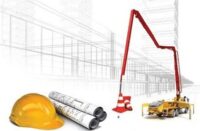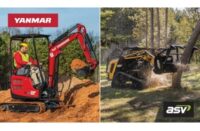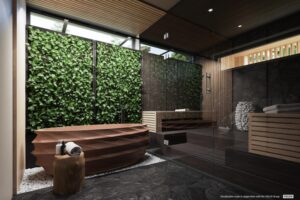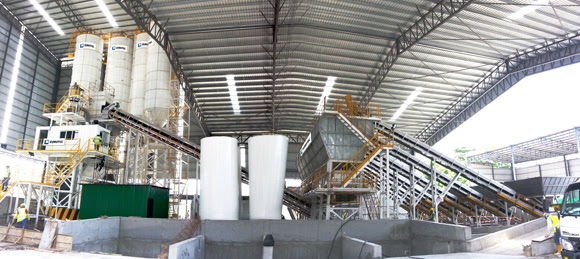
The concrete industry continues to boost global infrastructure development. Because of this, populations across the globe are also looking for greater sustainability and environmental care from the world around them. In the construction equipment segment, Lintec & Linnhoff has remained a pioneer in driving improved sustainability in construction materials supply, with a number of innovative designs aimed at boosting productivity while simultaneously limiting adverse environmental impact.
One example is in Kuala Lumpur, Malaysia. There, they saw a Eurotec MZP200 ready mix concrete batching plant installed within an enclosed warehouse in the Chan Sow Lin district. This was done as part of a sustainability drive in 2014. It was a design idea that proved so successful, other companies in the country adopted the design. This led to significant improvements in local air quality.
“Seven years ago, this was the only plant in Malaysia with the enclosed design. However, it quickly caught the attention of the local construction industry who were all impressed with the reductions in noise and dust emission levels it delivered,” said R. Sakthi, CEO at Lintec & Linnhoff Concrete Pte Ltd. “This greatly improved air quality and helped the Malaysian industry take another step towards more sustainable infrastructure development.
”Similar to the other ready-mix concrete plants in the MZ series, the Eurotec MZP200 features a modularized structure for both easy and quick installation and maintenance. They completed the project in Chan Sow Lin inside an almost totally enclosed warehouse, with the plant’s six aggregate bins, multiple tall cement silos, centre-discharge conveying system and static aggregate ground-feeding conveying system all assembled within the giant structure. This way dust and cement are contained within the compound, rather than polluting the external environment and nearby residential areas.
Production volume up; audible volume down
The cement batch plants worked for 10 hours per day. They produced up to 4.5m3 per batch or up to 200 m3/hour of ready-mix concrete for construction and infrastructure projects in Kuala Lumpur and the Klang Valley. Despite this, the Eurotec MZP200 concrete batch plant was notable for the reduced noise and dust.
By March 2015, the plant achieved another milestone. It received the SIRIM QAS International Sdn Bhd’s ISO 14001:2004 certification in the Manufacturing of Ready Mix Concrete category.
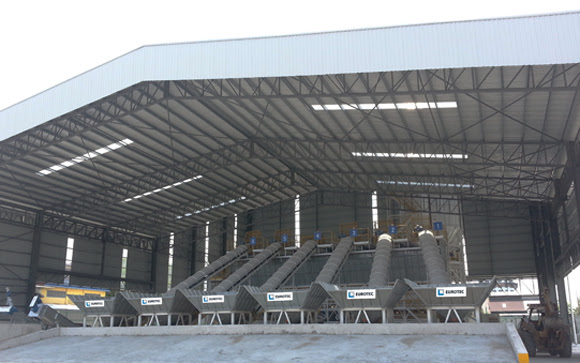
The enclosed warehouse reduces noise and dust emissions, a perfect design for urban locations.
“Our engineering detail allows the MZ batching plant model to fully reclaim returned concrete by separating the sand, aggregates and water, and then recycle them back into the batching process,” said R. Sakthi.
The combination of an enclosed warehouse for the concrete plant, plus an operational capacity to fully reclaim returned concrete, is a perfect design for urban locations. Increasingly in Asia they are paying greater attention to delivering better air quality. This comes as the Asian Development Bank launches a Clean Air for Livable Cities series to support the initiative. At the same time, demand for greener construction continues to rise. Interestingly, this has support from end users. This comes as recent research shows that most Asia-Pacific companies would pay higher rent to lease a building with stronger green credentials.
As this trend continues, contractors will increasingly look for innovative designs and advanced technology. They do this in their mission of producing good quality concrete that can help them deliver more sustainability-certified buildings.
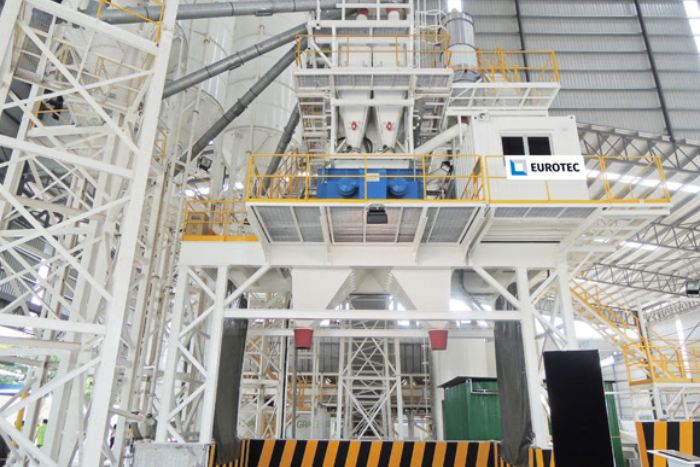
Customizable design to suit local needs
With an extensive range of customization options to suit the requirements of any major project, the Eurotec MZ series can be designed with one mixer and two discharge chutes to reduce the waiting time of mixer trucks, thereby increasing productivity and reducing fuel use. The energy consumption of the batch plant is also reduced. This is due to the use of computer-controlled twin-shaft mixers that ensure high accuracy. It also reduces the wear and maintenance costs. Operating at high torque, their three-dimensional mixing motions generate a higher consistency of concrete.
“This project showed that it is entirely possible for concrete batching plants and local residents to co-exist peacefully. This is possible as long as one pays proper attention to detail on the environmental impact,” concluded R. Sakthi. “Now the enclosed Ready Mix Concrete plant has become popular. Other job sites have started adopting it to reduce pollution. This is one early design innovation we are rightly proud of. However, we have lots more coming in the future too!”
